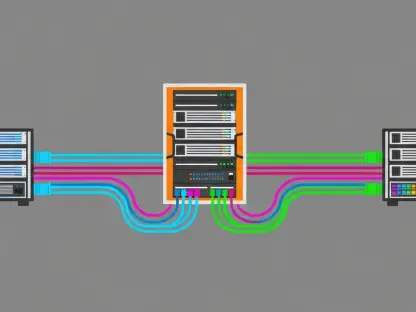Open-source software (OSS) has become an integral part of modern software development, with its adoption growing exponentially over the past few years. As we look towards 2025, the role of OSS in shaping cybersecurity is both promising and challenging. This article delves into the anticipated trends, threats, and defensive strategies that will define the cybersecurity landscape in the coming years. The impact of OSS on cybersecurity is poised to grow even further, primarily because of its extensive use in various industries and the evolving nature of cyber threats.
The Rise of Open-Source Software
Open-source software has seen widespread adoption across various industries, becoming a cornerstone of modern software development. With over 5 million OSS packages available, nearly 90% of modern codebases incorporate these packages, forming about 70-80% of the code. This extensive use of OSS is driven by its cost-effectiveness, flexibility, and the collaborative nature of its development. Organizations are increasingly turning to OSS because it allows them to harness the collective expertise of a global community of developers, offering innovative solutions at a fraction of the cost of proprietary software.
However, the very attributes that make OSS appealing also introduce significant security risks. The decentralized and often volunteer-driven nature of OSS development can lead to inconsistent maintenance and updates. This, in turn, creates vulnerabilities that can be exploited by malicious actors. As organizations increasingly rely on OSS, the need for robust security measures becomes paramount. Without consistent oversight and regular updates, the risk of cyber threats exploiting these vulnerabilities grows, potentially leading to significant security breaches.
Open-Source Software as a Major Threat Vector
The widespread adoption of OSS has made it a prime target for cybercriminals. Supply chain attacks, where attackers compromise software components to infiltrate larger systems, have increased by 431% since 2021. OSS forms a considerable part of this threat vector due to its extensive use and the lack of centralized governance. Cybercriminals are finding it increasingly advantageous to target OSS because once a vulnerability is identified and exploited in a widely-used OSS component, the reach and impact of the attack can be vast.
Malicious actors are drawn to OSS because it allows for one-to-many attacks, where compromising a single component can impact numerous organizations. The transparency and auditability of OSS, while beneficial for security reviews, also mean that bad actors can scrutinize the code for vulnerabilities. This dual-edged nature of OSS necessitates a balanced approach to its use and security. Regular audits, patches, and security updates are crucial in mitigating the risks associated with the open nature of OSS.
The Unpredictability of Major Vulnerabilities
Historical vulnerabilities like Log4j and Heartbleed have highlighted the unpredictable nature of OSS flaws. These significant vulnerabilities can have far-reaching impacts, affecting countless organizations and systems. As long as dependencies on OSS remain, the emergence of major vulnerabilities is inevitable. The complex web of dependencies within OSS ecosystems means that a flaw in one widely-used component can ripple through and impact multiple systems and applications, amplifying the scope of potential damage.
The decentralized development model of OSS means that vulnerabilities can go unnoticed for extended periods. When discovered, the impact can be widespread and severe. This unpredictability underscores the importance of proactive security measures and continuous monitoring of OSS components. Incorporating regular security reviews and automated vulnerability detection tools can help identify and address potential issues before they escalate into significant threats.
The Role of Artificial Intelligence in OSS Security
Artificial Intelligence (AI) is poised to play a transformative role in OSS security. AI-driven tools can enhance the detection and mitigation of vulnerabilities, providing a proactive approach to cybersecurity. However, AI also introduces new risks, such as the potential for AI-generated code to inadvertently use insecure libraries. As AI continues to integrate with software development processes, it becomes crucial to ensure that AI tools themselves are secure and that they operate in ways that enhance overall security rather than introduce new vulnerabilities.
One emerging threat is AI Package Hallucination attacks, where AI generates plausible yet non-existent malicious package names. Developers may unknowingly incorporate these compromised components into their projects, leading to security breaches. As AI becomes more integrated into software development, its impact on OSS security will be significant. The ability of AI to rapidly generate and analyze code can be a double-edged sword, providing powerful tools for both developers and cybercriminals.
Defensive Strategies: SBOMs and New Protocols
To address the security challenges posed by OSS, several defensive strategies are being implemented. One key measure is the use of Software Bills of Materials (SBOMs), which provide transparency into the components and dependencies of software. Mandated by the federal government’s Executive Order in 2021, SBOMs aim to enhance the visibility and management of OSS vulnerabilities. By providing a detailed inventory of software components, SBOMs empower organizations to track and manage security risks more effectively, ensuring that all software dependencies are accounted for and monitored.
Another innovative approach is the tea protocol, which leverages blockchain technology to secure the OSS ecosystem. By incentivizing secure coding practices and vulnerability reporting through rewards, the tea protocol aims to promote a culture of security within the OSS community. While promising, this approach faces challenges such as potential misuse for self-reward mechanisms. Transparent and fair implementation of reward mechanisms is crucial to prevent exploitation and ensure that incentives align with genuine security improvements.
Regulatory Push and Industry Efforts
Regulatory initiatives are driving the adoption of security measures in OSS. In the United States, federal agencies are pushing for mandatory SBOM implementation in critical sectors, guided by regulatory frameworks like EO14028 and CISA’s Secure by Design principles. Similarly, the European Union’s regulations, including NIS2, DORA, and ECRA, are setting stringent requirements for software security and transparency. These regulatory efforts aim to create a more secure and transparent software ecosystem, fostering greater accountability among software developers and users.
These regulatory efforts aim to create a more secure and transparent software ecosystem. However, the implementation of these measures is not without challenges. Disparate formats, varying quality, and specific software types like SaaS pose hurdles to the effectiveness of SBOMs. Despite these challenges, the increasing adoption of regulatory measures indicates a positive trend towards improved OSS security. As industry stakeholders work to standardize and refine SBOM implementation, the overall security posture of the software ecosystem is expected to improve.
The Potential Downsides of Over-Regulation
Open-source software (OSS) has emerged as a crucial component in the realm of modern software development, with its usage skyrocketing over recent years. As we approach 2025, the influence of OSS on cybersecurity holds both great promise and significant challenges. This article explores the expected trends, potential threats, and defensive measures that are anticipated to shape the cybersecurity landscape in the near future. The significance of OSS in cybersecurity is set to grow further, largely due to its widespread application across various sectors and the constantly evolving nature of cyber threats.
The advantages of OSS are clear – it promotes collaboration, innovation, and transparency. Developers across the globe can contribute to and improve OSS projects, leading to robust, secure, and efficient software solutions. However, these same characteristics can also introduce vulnerabilities. The open nature of OSS means that malicious actors can scrutinize the code for weaknesses and exploit them, emphasizing the need for vigilant and proactive security measures.
In the coming years, the cybersecurity community will need to adapt to these dynamics, devising new strategies to protect OSS from exploitation. This might include more rigorous code reviews, enhanced security features built into OSS projects from the ground up, and the development of advanced tools to detect and mitigate threats swiftly. As OSS continues to be integral in various industries, a strong emphasis on security will be critical to safeguarding critical infrastructure and maintaining trust in open-source solutions.









